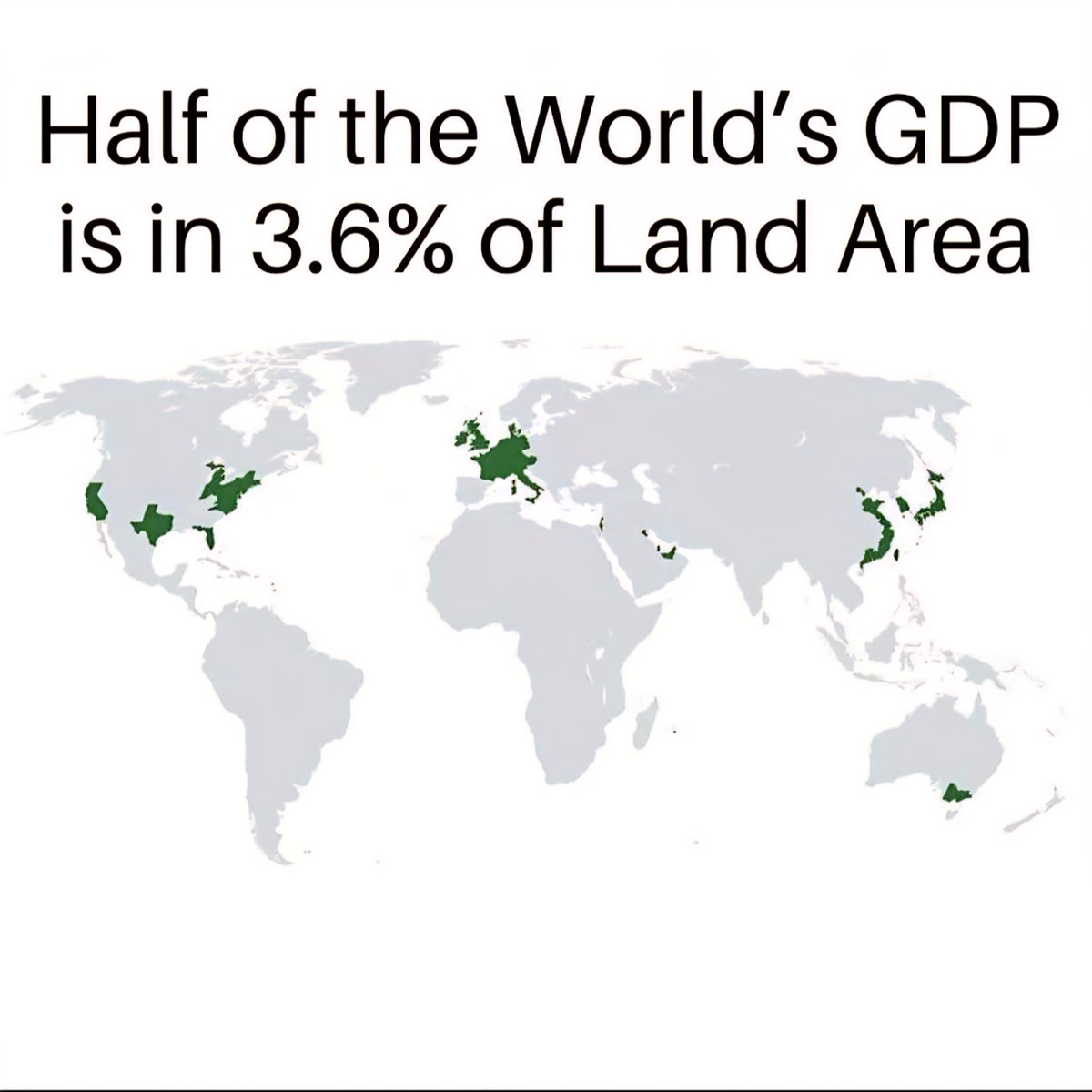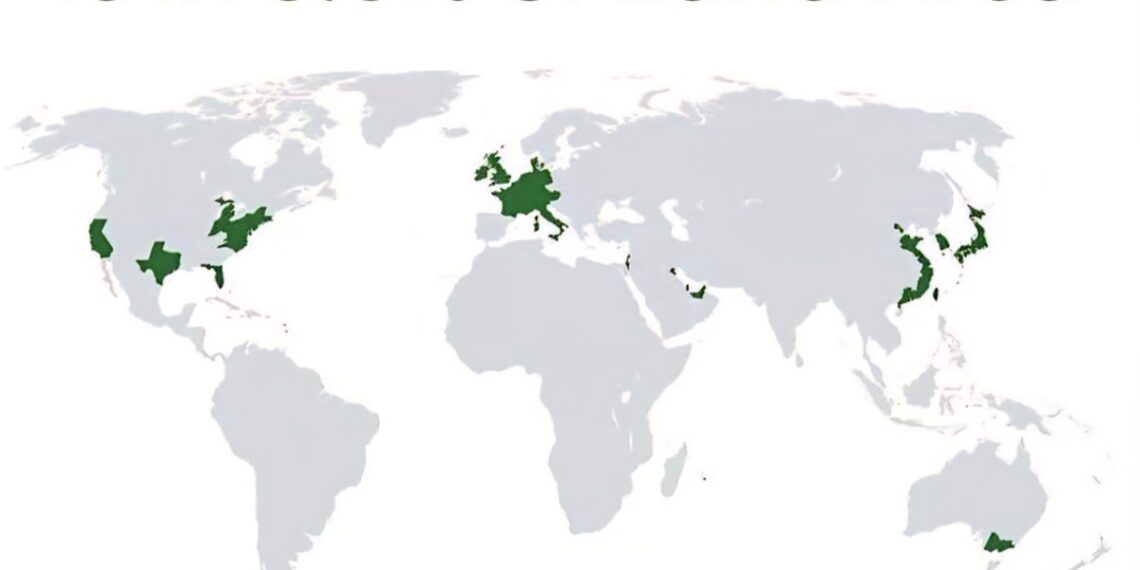Select Language:
-
Startling Concentration of Wealth in a Tiny Corner of the Globe
In 2025, new data reveals that a mere 3.6% of the world’s land area holds an astonishing 50% of the global GDP. This staggering statistic underscores the extreme economic disparity and the uneven distribution of wealth across the planet. The land that hosts this economic powerhouse includes major metropolitan hubs and financial centers in countries like the United States, China, and parts of Europe. This concentration means that while most of the world’s landmass remains underdeveloped or rural, the majority of global economic output is generated within a small urban footprint. -
The Power of Urbanization and Financial Hubs
Many of the world’s richest regions, such as the northeastern corridor of the United States, the Pearl River Delta in China, and Western Europe’s financial centers, dominate this tiny fraction of land. These densely populated urban zones act as economic nerve centers, housing financial institutions, tech giants, multinational corporations, and bustling markets. Urbanization plays a pivotal role in boosting productivity and economic activity, creating a ripple effect that benefits entire nations and continents. -
Implications for Global Inequality and Development
This concentration of wealth on such a limited portion of land heightens concerns about global inequality. Countries with extensive rural areas or less-developed infrastructure find it challenging to tap into the same economic potential. This disparity fuels migration to urban centers in search of better opportunities, often leading to overcrowding, housing shortages, and strain on city resources. Additionally, it exacerbates the wealth gap between the developed and developing world, with many regions struggling to catch up economically. -
Environmental Impact of Economic Concentration
The overconcentration of economic activity in these small land parcels has environmental consequences too. Urban centers with dense populations and heavy industry contribute significantly to pollution, energy consumption, and carbon emissions. This phenomenon intensifies the pressure on local ecosystems, accelerates climate change, and emphasizes the need for sustainable urban planning and green technologies. -
Real Estate and Cost of Living
The economic dominance of these small regions leads to soaring real estate prices and high living costs. In cities like New York, London, Tokyo, and Shanghai, housing affordability has become a pivotal issue for residents. The high demand for living and working space in these economic hubs often pushes out middle- and low-income populations, creating socio-economic divides that threaten social cohesion. -
The Rise of Remote Work and Decentralization
Interestingly, the global workforce is increasingly adopting remote work alternatives, enabled by advances in digital technology. This shift aims to decentralize economic activity, spreading it beyond traditional urban cores. While this trend offers hope for more balanced regional development, the challenge remains that much of the wealth is still generated within these concentrated land areas. Policymakers are exploring ways to distribute growth more evenly to foster sustainable development across wider regions. -
The Future of Global Wealth Distribution
As we move further into 2025, there is growing emphasis on creating equitable opportunities for less-developed regions. Initiatives such as infrastructure investments, technology transfer programs, and international cooperation seek to flatten the economic landscape. The ultimate goal is to bridge the gap between these concentrated economic zones and the rest of the world, ensuring that benefits of growth reach a broader segment of global populations. -
Visualize the Fact: An Unprecedented Concentration

This image captures the vibrant, bustling nature of urban centers that epitomize the enormous economic output generated within that tiny land area. Skyscrapers, busy streets, and sprawling infrastructure symbolize the concentration of wealth and activity in these financial hubs. -
Conclusion: Rethinking Global Economic Strategies
The astonishing fact that half of the world’s GDP is concentrated within just 3.6% of land compels industry leaders, policymakers, and global citizens to reevaluate development strategies. Creating more inclusive and sustainable economic models will be crucial in ensuring long-term prosperity and environmental conservation. As the world continues to evolve, balancing concentrated economic power with widespread development remains one of the greatest challenges of the 21st century.






